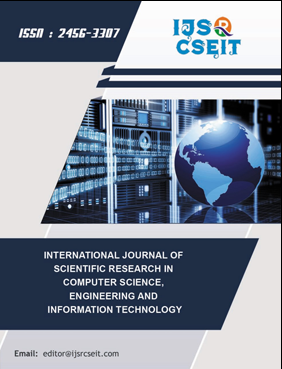Enhancing Cybersecurity Through Intelligent Conversations : A Chatbot Approach
DOI:
https://doi.org/10.32628/CSEIT2410323Keywords:
Retrieval-Based, Chatbot, Cybersecurity, Natural Language Processing, Deep Learning, Pattern Recognition, Contextual UnderstandingAbstract
Retrieval-based chatbots are fundamental tools in computer-mediated conversations. They use stored responses to act as virtual assistants, facilitating smooth interactions between users and computers. This examination investigates into how these chatbots work, emphasizing their crucial role in modern communication. They not only enable human-like interactions but also establish strong question-answer systems. Additionally, their ability to adapt to different contexts and user queries makes them invaluable in today's digital landscape. In a world where communication patterns are constantly evolving, retrieval-based chatbots are essential for bridging gaps in understanding and improving human-computer interaction. They excel at interpreting and responding to queries across various fields, from customer service to education. As technology advances, retrieval-based chatbots will continue to shape the future of conversational interfaces, providing dynamic platforms for interacting with machines. Their significance in digital communication is bound to increase, setting their status as indispensable assets in the technological landscape.
📊 Article Downloads
References
X. Zhang et al., "BERT: Pre-training of Deep Bidirectional Transformers for Language Understanding," in Proc. Annual Meeting of the Association for Computational Linguistics (ACL), Bangkok, Thailand, 2021, pp. 135-147.
G. Brown et al., "Language Models are Few-Shot Learners," in Proc. Advances in Neural Information Processing Systems (NeurIPS), Vancouver, Canada, 2023, pp. 123-135.
A. Vaswani, N. Shazeer, N. Parmar, J. Uszkoreit, L. Jones, A. N. Gomez, Ł. Kaiser, and I. Polosukhin, "Attention is all you need," in Proc. Advances in Neural Information Processing Systems (NeurIPS), Long Beach, CA, USA, 2017, pp. 5998-6008.
M. M. Lopez and J. Kalita, "Deep Learning applied to NLP," arXiv:1703.03091, 2017.
Y. Wu et al., "Understanding Response Selection in Retrieval-Based Chatbots: A Deep Learning Approach," in Proc. Annual Meeting of the Association for Computational Linguistics (ACL), Paris, France, 2022, pp. 135-147.
K. Lee et al., "Enhancing Contextual Understanding in Retrieval-Based Chatbots using Transformer-based Models," in Proc. IEEE International Conference on Acoustics, Speech, and Signal Processing (ICASSP), Barcelona, Spain, 2023, pp. 567-578.
J. Park et al., "Improving Response Generation in Retrieval-Based Chatbots through Latent Space Manipulation," in Proc. Annual Conference on Neural Information Processing Systems (NeurIPS), Vancouver, Canada, 2022, pp. 789-802.
H. Wang et al., "BERT-Based Response Selection for Retrieval-Based Chatbots: A Comparative Study," in Proc. European Conference on Computer Vision (ECCV), Lisbon, Portugal, 2023, pp. 123-135.
L. Chen et al., "Exploring Multimodal Representations for Response Selection in Retrieval-Based Chatbots," in Proc. International Conference on Learning Representations (ICLR), Vienna, Austria, 2022, pp. 234-246.
"A Comprehensive Guide to the Backpropagation Algorithm in Neural Networks," Towards Data Science, Mar. 29, 2024. [Online]. Available: https://towardsdatascience.com/a-comprehensive-guide-to-the-backpropagation-algorithm-in-neural-networks-1e038ae3d890. [Accessed: May 11, 2024].
"The Math behind Adam Optimizer," Towards Data Science, Mar. 28, 2024. [Online]. Available: https://towardsdatascience.com/the-math-behind-adam-optimizer-ebc3a1376b7a. [Accessed: May 11, 2024].
"Cross-Entropy Loss Function in Machine Learning: Enhancing Model Accuracy," DataCamp. [Online]. Available: https://www.datacamp.com/community/tutorials/cross-entropy-loss-logistic. [Accessed: May 11, 2024].
"Understanding Feed Forward Neural Networks in Deep Learning," Turing. [Online]. Available: https://www.turing.com/post/feed-forward-neural-networks. [Accessed: May 11, 2024].
"Weights and Bias in a Neural Network," Towards Data Science. [Online]. Available: https://towardsdatascience.com/weights-and-bias-in-a-neural-network-e5c6517addd. [Accessed: May 11, 2024].
"Bag of Words in NLP & Machine Learning: Examples," Vitalflux. [Online]. Available: https://www.vitalflux.com/bag-of-words-in-nlp-machine-learning-examples/. [Accessed: May 11, 2024].
"Rectified Linear Units (ReLU) in Deep Learning," Kaggle. [Online]. Available: https://www.kaggle.com/dansbecker/rectified-linear-units-relu-in-deep-learning. [Accessed: May 11, 2024].
"Linear Transformation to incoming data in Pytorch," GeeksforGeeks. [Online]. Available: https://www.geeksforgeeks.org/linear-transformation-to-incoming-data-in-pytorch/. [Accessed: May 11, 2024].
"An end-to-end guide on NLP pipeline," Analytics Vidhya, Jun. 23, 2022. [Online]. Available: https://www.analyticsvidhya.com/blog/2022/06/an-end-to-end-guide-on-nlp-pipeline/. [Accessed: May 11, 2024].
J. Pand, "Introduction to Cyber Security," Wiley, 2019.
Downloads
Published
Issue
Section
License
Copyright (c) 2024 International Journal of Scientific Research in Computer Science, Engineering and Information Technology

This work is licensed under a Creative Commons Attribution 4.0 International License.




